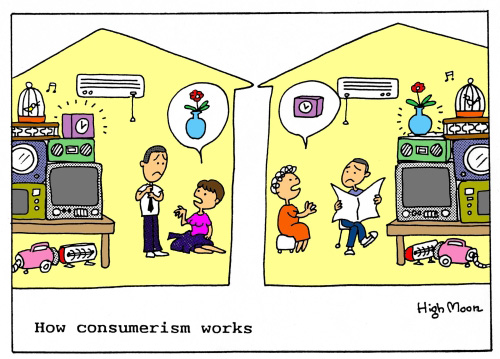 One of the things that surprised me the most when I first came to Japan was the amount of shopping streets and malls that seemed to be everywhere. Just in Osaka there are two main shopping areas, Namba and Umeda, and an arcade, full of shops and with severall malls, that is more than 600 m in lenght connects them. In there, every three shops you can see clerks in the doors, yelling special announcements about sales in their shops or just welcoming customers to get inside, making the shopping experience quite noisy sometimes. But the most amazing thing, is that they are never empty.
One of the things that surprised me the most when I first came to Japan was the amount of shopping streets and malls that seemed to be everywhere. Just in Osaka there are two main shopping areas, Namba and Umeda, and an arcade, full of shops and with severall malls, that is more than 600 m in lenght connects them. In there, every three shops you can see clerks in the doors, yelling special announcements about sales in their shops or just welcoming customers to get inside, making the shopping experience quite noisy sometimes. But the most amazing thing, is that they are never empty. Popular
culture in Japan is very big, there are trends associated with it,
and if something starts to get attention it might go from nothing to
national-wide famous in a week. People pay real attention to your
looks and the fan-related accessories that you wear. That can be
because anything you might like or be following provably has a lot of
related merchandising, but it can also relate to the fact that
shopping seems to be one of the national sports. When I first met a
lot of Japanese people, asking about their interests and what do they
do when they meet with friends, or to have fun, about 80% of the
female ones included shopping in their lists. The same situation
happened when they asked me to meet them somewhere, almost always was
“to go shopping”.
Popular
culture in Japan is very big, there are trends associated with it,
and if something starts to get attention it might go from nothing to
national-wide famous in a week. People pay real attention to your
looks and the fan-related accessories that you wear. That can be
because anything you might like or be following provably has a lot of
related merchandising, but it can also relate to the fact that
shopping seems to be one of the national sports. When I first met a
lot of Japanese people, asking about their interests and what do they
do when they meet with friends, or to have fun, about 80% of the
female ones included shopping in their lists. The same situation
happened when they asked me to meet them somewhere, almost always was
“to go shopping”.
 The
other point that I realized while living here is that Japanese love
brands. Japan is known worldwide as a very fashionable country since
the 70s when the Japanese designers started to get attention from
the high-fashion catwalk, and it has been growing since then. With
lots of different clothing styles and changing trends, there is also
urban tribes with very specific clothing (and sometimes behavior)
rules, which just adds to the main shopping trend. Last November, a
new three flour H&M store opened just in front of their only
other store in Osaka, in ebisubashi, and the marketing for it
was launched more than a month before, along with their new
collaboration with the brand Versace. They had an opening party, with
special VIP guests, between them the most famous
The
other point that I realized while living here is that Japanese love
brands. Japan is known worldwide as a very fashionable country since
the 70s when the Japanese designers started to get attention from
the high-fashion catwalk, and it has been growing since then. With
lots of different clothing styles and changing trends, there is also
urban tribes with very specific clothing (and sometimes behavior)
rules, which just adds to the main shopping trend. Last November, a
new three flour H&M store opened just in front of their only
other store in Osaka, in ebisubashi, and the marketing for it
was launched more than a month before, along with their new
collaboration with the brand Versace. They had an opening party, with
special VIP guests, between them the most famous
Japanese bloggers,
that gathered around 300 people in the door just to get a chance to
see the new clothing pieces on the famous guests before everyone
else. The opening to the public was made two days later, and the
lines for it started the previous night with approximately a 100
people according to the news, with more than 600 people when the
opening started. Within two hours the top rated items were sold out.
Just another example of how consumerism is present in Japan, even
without getting into the technological related market.
A Cartoon by Hiroshi Takatsuki (High Moon) , about consumerism:

Also check out this interesting blogs related to consuming patterns in Japan;
http://ethicalnippon.nbunce.com/2010/04/hyper-consumerism/
http://www.claireburdett.com/2010/05/going-japanese-trends-in-consumerism/




